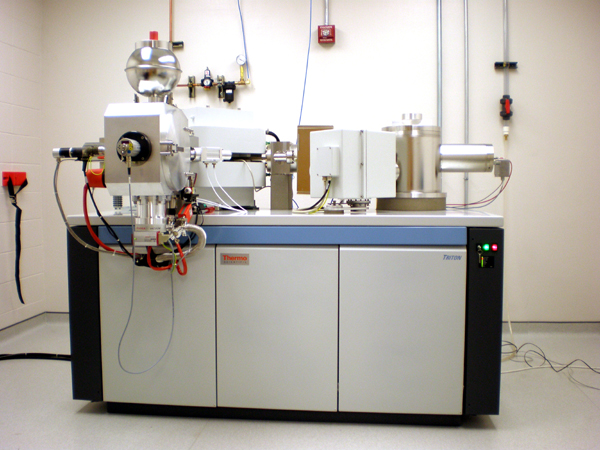
Jesse Davenport
Favourite Thing: My favorite thing about science and more specifically geology is that you can be out of the field surrounded by rocks that are millions of years old. You can experience the great outdoors, observe the natural landscape and the rocks and structures that compose it. I can collect some rocks and bring it back to the lab and from the analyses I can perform I can basically solve the mysterious of how these rocks got there, how they formed, in what sort of environment, etc. I can basically construct a very intricate story from a couple of small chunks of rock. And that is what is truly amazing to me about geology and science in general. Going from such a grand scale to such a small scale and back again!
My CV
Education:
Granville High School — 2003-2007; College of Wooster — 2007-2011; University of Notre Dame — 2011-2013; Université de Lorraine/CNRS-CRPG — 2013-Present
Qualifications:
B.A. in Geology and Mathematics; Master’s of Geology in Lunar Petrology and Geochemsitry
Country I live in:
Nancy, France
Work History:
College of Wooster, Denison University, University of Notre Dame, Philmont Scout Ranch,
Current Job:
I am currently a PhD student at CRPG working in isotope geochemistry of Himalayan rivers, sediments and rocks.
Employer:
Centre de Recherches Pétrographiques et Géochimiques
Me and my work
I work with rocks, sediment and river water from the Himalayan Tibetan Plateau to try to solve and reconstruct past climate change and the history of the coliision of India with Asia.
I am a geologist (obviously) and I am currently a PhD student at CRPG in Nancy, France where I research the collision of India with Asia using what is called isotope geochemistry. I started off attending college at the College of Wooster, Wooster, Ohio, U.S.A. where I earned a bachelor’s degree in geology and mathematics. My senior thesis project was investigating what is called the Big Sky Orogeny in southwestern Montana. My project was part of a larger research endeavor to develop a greater understanding of the Big Sky Orogeny by characterizing the protolith, grade and timing of metamorphism, and the intensity and timing of tectonism of three rock suites. I used petrography and geochemistry to determine if mylonitic rocks were derived from adjacent non-mylonitic rocks.
For my master’s degree, I attended the University of Notre Dame researching the formation and evolution of the Lunar Magma Ocean (LMO). I conducted research and modeling of the crystallization and evolution of the LMO. I developed MATLAB scripts to successfully model and visual these processes. I also conducted research on Ocean Drilling Program samples from Leg 197 of the Detroit Seamount. Gained experience with numerous analytical techniques such as laser ablation and multi-collector ICP-MS, EPMA, SEM, XRF, XRD, and ICP-OES systems.
My Typical Day
My typical begins between 8 and 8:30 with some coffee and a first foray into the clean lab to prepare samples for the chemistry tasks of the day, then spending most of the day in the clean lab completing the work. A day could also be spent analyzing samples on various machines or just as simple as reading articles and writing.
Some days, reading literature on the Himalayas and climate change is what takes up my time. Other days, preparing water, sediment and rock samples for analysis is what I do. Reading is pretty straightforward, but I will tell you about the process of preparing samples and then analyzing them via the Triton TIMS (Thermal Ionization Mass Spectrometry).
I first start with some river water samples, which I usually have the concentrations of major and trace elements for. I then calculate how much of each sample I need to analyze based on the concentration. Next, I dry the sample in an oven and let it all evaporate. Once that is complete I rehydrate the dried sample in 5mL of 2N HCl and let it dissolve real good in the oven. Next, I begin the column chemistry process (see “myimage4”). Basically, I run varying amounts of 2N, 3N and 4N HCl through the column after introducing the sample. In theory, the HCl acid strips everything but Ca out of the columns and into the waste beaker at the bottom of the column. When this step is complete I have 60 mL of sample that needs to be dried/evaporated over night.
Once the final drying is complete, I head over to the Triton lab (see “myiamge2”). Here the dried samples are prepared to go into the machine to be analyzed. This is accomplished by dissolving the sample residue in 1 microliter Nictric Acid. Next, I use a syringe to suck the sample up and then drop by drop I place it on a Re-Os filament, letting the sample heat up and evaporate onto the filament each time. Finally, the sample is heated up very hot for just a second and then loaded into the sample. The process is repeated for all of the samples as well as the standards. And finally, we load the sample wheel into the machine pictured above and let it sit over night to gain the appropriate vacuum pressures. The next day we heat the filaments up for each sample and begin the analyses, which take approximately 4-6 hours for each sample due to the high precision and sensitivity of the machine.
As my PhD research progresses, I will be doing more types of analyses such as oxygen, strontium, hydrogen and carbon isotopes. But I must get all of my Ca samples done first!
What I'd do with the money
Student outreach in the Himalayas to help educate young students and families about the dangers of earthquakes, landslides and other natural disasters that occur quite frequently there and how to prepare themselves for these events!.
I would to use money to fund outreach to students to the inter-European group I am in called iTECC (mainly to help fund an outreach documentary) or use it to purchase equipment for communication to students from an IODP cruise that I might particapate in.
My Interview
How would you describe yourself in 3 words?
Loyal, adventure-seeking, kind/polite
Who is your favourite singer or band?
Led Zeppelin
What's your favourite food?
tacos
What is the most fun thing you've done?
Climbed Denali or hiked the Appalachian Trail
What did you want to be after you left school?
I didn’t really know exactly what but I knew something where I could be outdoors a lot.
Were you ever in trouble in at school?
No, nothing serious, just a few pranks.
What was your favourite subject at school?
Physics
What's the best thing you've done as a scientist?
Field work in southwestern Montana for 2 months was a life changing experience as well as field camp in Utah. Also, my Master’s research in lunar geochemistry is quite important and will help many geologists not just in lunar science, but a wide range of fields.
What or who inspired you to become a scientist?
Definetely my teachers in high school and college. Their enthusiam and guidance was so infectious it was hard not to what to become a scientist and spread that sam enthusiasm.
If you weren't a scientist, what would you be?
If I wasn’t a geologist I would be a music producer/DJ making electronic dance music.
If you had 3 wishes for yourself what would they be? - be honest!
1) Go to the Moon or another planet in the solar system 2) Become a really famous DJ or musician 3)
Tell us a joke.
What is the difference between a geologist and a chemist? A chemist will drink anything that is distilled and a geologist will drink anything that is fermented.
My favourite place on earth is?
southwestern Montana
Other stuff
Work photos:

Here is where I work in France at Centre de Recherches Pétrographiques et Géochimiques!

Here is the ThermoFischer Triton TIMS that have used almost exclusively in my PhD so far!

And finally, here I am in the field in Montana in 2010 taking a look at some excellent mylonite samples.
My profile link:
/earthj14-zone/profile/jessedavenport/
 Print this profile
Print this profile











 Print this profile
Print this profile